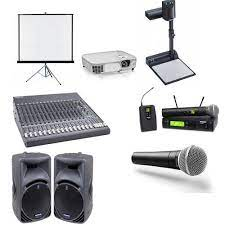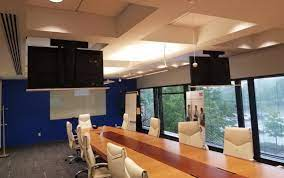It’s lights, camera and action! And the spotlight is on you. You do a sound check 1,2-1,2 “Can everyone hear me?” You ask your audience. If you ever wondered how to properly hold a microphone during a presentation, this article has all the answers for you. If you’ve ever been in an audience where you had difficulty hearing or understanding a speaker, you know the frustration that occurs when a speaker doesn’t use a microphone properly.
When tasked with holding a microphone during a presentation, you should hold it effectively so that it captures your voice but at the same time, does not interfere with your interaction with the audience. First and foremost, let’s get an explanation of what a microphone is, out of the way.
What is a microphone?
According to Wikipedia, a microphone, also called a mic, is a device that converts sound into an electrical signal. A microphone is a great instrument to use to help you to amplify your voice if you sing, give speeches, do stand-up comedy, or otherwise perform in front of a crowd. Knowing how to properly hold a microphone is the key to using it to your advantage.
You’ve probably seen some people holding a microphone like an ice cream cone and wondered to yourself if that was the correct way or not; well, we’re going to explain the most ergonomic ways to hold a microphone during a presentation in the next step.
5 tips for handling a microphone during a presentation
Keep your hand on the middle section of the microphone at all times
Make sure that your hand is in the right position by keeping your hand in between the head of the microphone and the base where the antenna is located. This allows the microphone to enhance your voice. Avoid holding the microphone at the bottom, especially if there’s a wire, as you could accidentally unplug it with your hand, or worse trip and fall.
Wrap all of your fingers around the microphone to keep it steady
Always hold the microphone using all of your fingers to ensure that it doesn’t move around too much. Keep your wrist relaxed and hold the microphone in a confident manner.
Squeeze the microphone firmly as you use it
Squeezing the microphone helps you have greater control over your breathing and control over the mic. This helps prevent the microphone from moving a lot. However, try not to squeeze the microphone too hard as this can cause tension to build in your hand and voice.
Hold the microphone at a 45-degree angle
The best way to hold a microphone when during a presentation is at a 45-degree angle downward. Of course, this is different from holding a microphone when singing. This angle is the best position for your breathing and for expanding your ribs. Never hold the microphone in a vertical position like an ice-cream cone, as this won’t enhance your voice.
Keep the microphone approximately one and a half to five centimetres away from your mouth
Although it differs from person to person, try to keep the microphone as close as possible to your mouth without actually touching it. Practise holding the microphone a few different distances away from your mouth to see what proximity works the best for you. The closer you are to the microphone, the more enhanced the lower frequencies will be.
Conclusion
If you want the microphone to sound as clear and natural as possible, ensure that you follow all the instructions as stated above. If possible, practice speaking into the microphone before it’s your time to shine to get your technique right. At AV Aids and Visuals, we understand the virtual importance of having functional and reliable AV and sound systems, to help ease anxiety and stress of sound systems that actually work. If you need to get your hands on any of our sound equipment, don’t hesitate to contact us.





